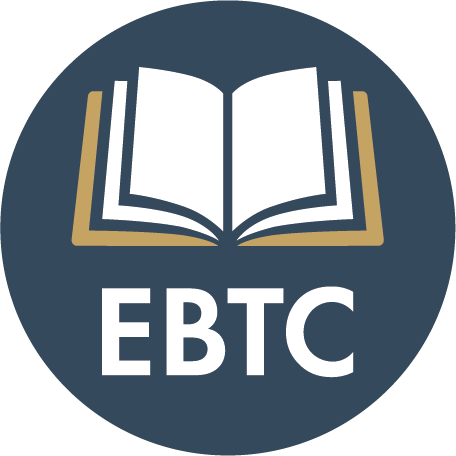We did an interview with Dr. Benedikt Peters on our current Bible Translation Project
When did the idea of a new Bible translation first enter your head?
I have been teaching since the 90s. After completing my studies of Hebrew, Greek, and literature, I began making certain modifications to the Bible translations in my personal expositions and my preaching, in order to arrive at an even more accurate rendering of the original text.
How did you come up with the idea of working on a new Bible translation?
In 1999, Wini Weiler, Wolfgang Bühne and me thought about revising the text of the 1905 Elberfelder translation and use it as a basis for the MacArthur Study Bible. Unfortunately, the project fell through at the time.
While working on a series of Bible commentaries, I would do a new translation of each of the Hebrew texts. With New Testament books, I would merely change the German wording here and there. (Commentaries published so far: Job, Psalms, Proverbs, Ecclesiastes, Zechariah, 1 Peter, 2 Peter, Jude, Romans, Ephesians, Gospel of John, Revelation.) Although I can draw on this preliminary work, I am now working on a new translation of the entire Bible.
It brings me great joy to be able to eventually realize this project, which I have been working on for years, in collaboration with the EBTC.
What does it take to produce a Bible translation?
If you are involved in a work like this, you must love God, His Word and His church. You have to understand that it takes diligence and perseverance. You must have staying power.
Furthermore, you need proven and expert advisors, who will contribute greatly to the success of the work with their critique and suggestions.
Linguistic and technical requirements must be met: You need to be proficient in the biblical languages and have the ability to translate everything into easy-to-understand German. Editors will play an important role in that.
In addition, the text has to be digitally and visually processed. The layout and typesetting must be done right. The Bible needs to be printed and circulated. Obviously, this work cannot succeed without God’s grace.
Everyone involved needs to understand that, as with any work for the Lord, we will have to expect opposition, according to 2 Timothy 3:12.
So please pray for the whole team for perseverance in the face of the trials bound to come, for health, for unity, and for success for each step leading up to the finished product.
How long will it take to complete this project?
It will take as much time as needed. We are hoping to publish the first edition within the next two years.
What is the difference between a paraphrase, a revision and a new translation?
A translator has to decide upon the criteria for his translation:
- free vs. word-for-word
- equal in value vs. equal in form
- recipient-oriented vs. author-oriented
A paraphrased Bible is more free than a translation. It strives for equality in value, which can be achieved even without paying strict attention to the form of the original text, i.e. to every single word and to the sentence structure.
A translation, on the other hand, takes into account every single word in the text and pays close attention to the sentence structure.
In a paraphrase, the main focus is on the reader, the recipient.
A translation wants to ensure first and foremost that the rendering of the text is as accurate as possible. It requires from the reader to come to the text and to make every effort to understand it in its original form.
As a paraphrase seeks to transport the overall meaning of the original text to the target language, the translator must already have a pre-formed opinion about the meaning of the text. Inevitably, he will have made preliminary interpretive decisions. Intentionally or not, he will steer the reader’s understanding of the text in the direction he took.
A revision of an existing translation, i.e. a new version, is an adaptation to language change. Outdated expressions are replaced by contemporary ones. Only few modifications are made to the meaning of the text.
A new translation starts with the original text, which is translated word-for-word, sentence-for-sentence, book-for-book. No one does it like Luther, who in his translation of the New Testament worked entirely without any templates. Today’s translators constantly compare their own translation with proven translations already available – of which we have a good number in the German language.
The 20th century has seen much progress in the fields of Greek and Hebrew studies. These findings are not sufficiently reflected in the 19th and 20th century translations. Not until the beginning of the 20th century did the Greek scholars discover that the Greek verbs do not only carry tense, but also aspect. And up until the turn of the last century, there was still great uncertainty in the Hebrew studies as to whether or not Hebrew verbs mark tense, aspect or modality. This has changed gradually over the last twenty years.
Over twenty years ago, I began to read through the various publications on the Hebrew verbal system produced by Hebrew scholars over the years, to gain a deeper understanding of this issue.
Eventually, my studies and ongoing research grew into a doctoral thesis, which I submitted to The Master’s Seminary under the title: …»The Use of QATAL and YIQTOL and their we- forms. An Inductive Study, conducted on the basis of the corpus of the Biblia Hebraica.«
All the linguistic findings mentioned above must, of course, be incorporated into this new translation. They may be less evident in narrative texts, but the poetic texts will need to undergo significant change (i.e. Job, Psalms, Proverbs, Song of Songs, and the Prophets).
Why do you go to such lengths to work on a new Bible translation?
This is the Word of God we are talking about – eternal, inerrant and all-sufficient. We should be striving for as accurate a rendering of the Scriptures as possible. The more accurate the translation, the better the writer’s meaning and intention can be discerned and taught for the benefit of the church.
Why do we need yet another Bible translation and what sets it apart from existing translations?
Most preachers and teachers are not proficient in the original languages. It is our intention to equip all those who want to study the Bible with diligence and care (2Tim 2:15) to understand it better, apply it personally and preach it (Ezra 7:10), with a tool that will bring them as close as possible to the original text. The emphasis of this translation is on linguistic accuracy, but it should also be comprehensible. Finding the right balance between the two is one of the major challenges of this work. Footnotes will provide further useful explanations on grammatical structures and thus, the meaning of vital expressions. This translation will help every devoted Bible reader to better understand God, His will for his personal life and His redemption plan.
The work on this Bible translation lies close to Benedikt Peters’ heart. He will dedicate most of his time in the coming years to this project. By the end of 2023, we are expecting the first reading samples. Please visit this site for updates, specific prayer requests and donations.


